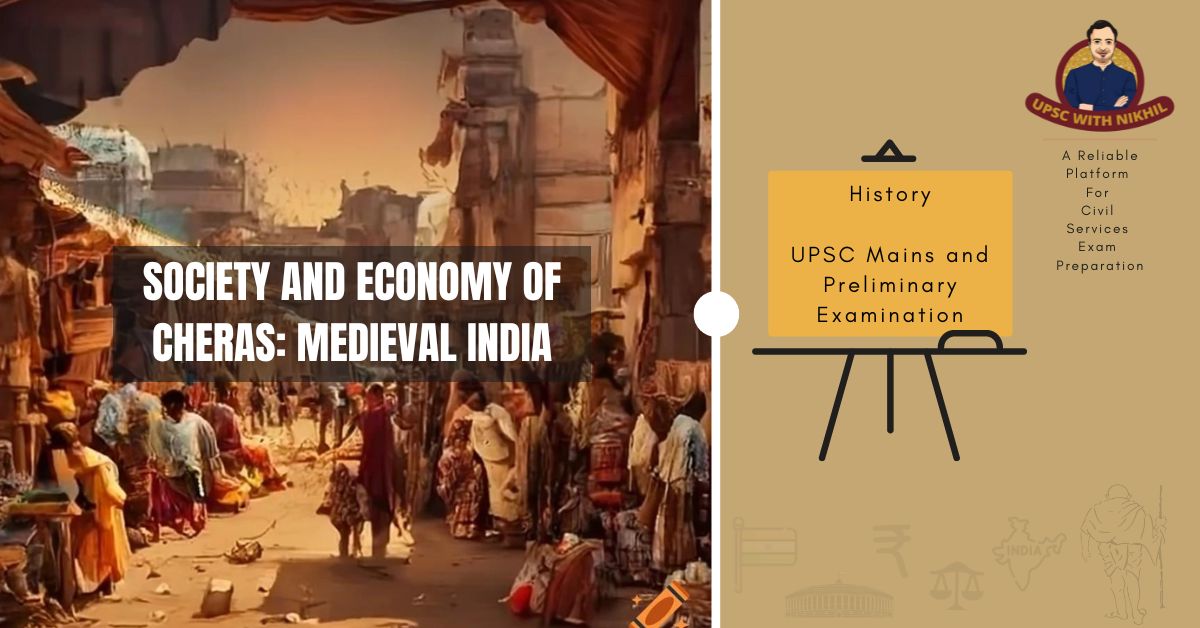Society And Economy Of Cheras: Medieval India
Introduction
The Cheras were an ancient Dravidian-born Tamil royal dynasty. There were two separate time periods within this dynasty. The Later Chera (also known as the Kulasekharas) governed between the 8th and 12th centuries AD, whereas the Early Chera ruled from the 4th century BC to the 5th century AD. Their society was largely oriented on pastoral and agricultural pursuits. They traded with Middle Eastern and Mediterranean nations for spices, ivory, wood, pearls, and stones.
Cheras's Economy
• The Indian Ocean trade and "pastoral-cum-agrarian" activities were the mainstays of the early Chera economy.
• Over time, there was an increasing focus on agriculture, which laid the groundwork for more significant economic transformation.
• The Chera chiefdom's trade with Graeco-Roman traders, the "Yavanas," and with north India gave the region substantial economic momentum.
• Due to geographical advantages, such as the Monsoon winds that brought ships directly from Arabia to south India, the Cheras grew to be a significant force in ancient southern India.
• Exotic spices are in great supply in the inner Ghat Mountains.
• Their being several rivers that connect the Ghats to the Arabian Sea.
• Before the Common Era, Middle Eastern and Mediterranean (Graeco-Roman) navigators engaged in spice trade, which was substantially increased in the early Common Era.
• The "trade" that took place in Keprobotras' domain is extensively detailed in the Periplus Maris Erythraei. The Malabar Coast, which the Periplus claims was "abundant with large ships of Romans, Arabs, and Greeks," Muziris was the most significant center along the coast.
• Bulk spices, ivory, lumber, pearls, and stones were "exported" by the Chera nation to Middle Eastern and Mediterranean nations.
• In exchange for black pepper, the Romans brought a lot of gold. This has been confirmed by the finding of Roman coin hoards in numerous locations throughout Tamil Nadu and Kerala.
• The Indian Ocean spice trade collapsed after the fall of the Roman Empire in the third and fourth centuries CE.
• The Chera family was renowned for creating steel of the highest caliber.
• For the Romans, Egyptians, Chinese, and Arabs, they make seric iron.
• The steel was exported in the shape of "Wootz," or steely iron cakes. Wootz steel came from India and has a lot of carbon.
Society of Cheras
• Native Dravidian faiths were practiced by the majority of Chera people.
• Possible religious practices included offering sacrifices to numerous gods, including the supreme god Murugan.
• Kottava, the goddess of war, was the recipient of numerous offerings of meat and toddy.
• It is believed that Kottava was incorporated into the goddess Durga's current form.
• It is believed that the first wave of Brahmin immigrants to Chera region arrived alongside or after Jain and Buddhist missionaries in the third century BCE.
• While the vast majority of people practiced their native Dravidian religion, a small minority, mostly migrants, practiced Jainism, Buddhism, and Brahmanism. There were also recognised Jewish and Christian populations in Kerala.
• Early Tamil texts do frequently discuss social stratification, as seen by the word kudi (meaning "group") being used to refer to "caste."
• One remarkable aspect of Cheras civilization was the high prominence given to women.
• In Cheras society, farming and pastoralism were the two main professions.
• Harvesting, threshing, and drying are only a few of the agricultural tasks that are mentioned in early Tamil scriptures.
• Musicians and poets were highly regarded in society. Professional poets and poetesses created works that extolled their clients and received rich payment for it.
Conclusion
The Cheras, who ruled over a sizable portion of Tamil Nadu and Kerala in south-eastern and south-western India, were the first to establish a historical reigning dynasty in the region. Although they were a predominantly agrarian lifestyle, they did trade with Middle Eastern and Mediterranean nations for gems, pearls, steel, ivory, and spices. The geographical factors that contributed to the establishment of Cheras in southern India included the existence of several exotic species in the Western Ghats, good monsoonal winds for commerce, and a huge number of rivers. In Chera community, women are highly valued, and the majority of people follow Dravidian faiths.


